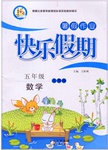题目内容
We benefit a lot from the s_________he made on how to learn English.
suggestion(s)

 一诺书业暑假作业快乐假期云南美术出版社系列答案
一诺书业暑假作业快乐假期云南美术出版社系列答案Lisa is ten years old. She is disabled because she has brain damage. She could not do even the simplest thing until a year ago. She could not comb her hair or feed herself. Her parents loved her. And they treated her like a baby.
Mr. Ching has a daughter and a son. They are both grown. They live far from their father. Mr. Cling felt lonely. He decided to become a foster grandfather to a handicapped child. And that was how he met Lisa.
Foster grandparents are grandparents who are not related by birth but foster parents love the children they care for. They also help the handicapped children in special ways. They help to dress and feed the children. They read to them and tell them stories. They also help with handicapped children’s therapy. Therapy is the treatment of a disease or disorder. It helps the children overcome their handicaps.
Mr. Cling became a foster grandparent to Lisa when she was nine years old. At first, Lisa was shy. She was afraid because Mr. Cling was a stranger. But he came to see her every day, gradually she began to trust him. At last, Lisa let Mr. Cling do things for her.
Cling speaks for most foster grandparents when he say, “We all benefit. The handicapped children benefit because we help them live more useful lives. And we benefit because we know the children need us and love us. For any person, there is no greater happiness than that.”
【小题1】Why did Lisa need help?
| A.She was a baby |
| B.She did not want to do anything. |
| C.She had brain damage. |
| D.She was a blind girl. |
| A.Elderly | B.Related by birth |
| C.Not related by birth | D.King-hearted |
a help with their treatment b dress them c live in their homes
d feed them e charge them money f read to them
g tell them stories h make fun of them
| A.a,b,d,e,f | B.a,c,e,f,h | C.b,c,d,f,g | D.a,b,d,f,g |
| A.Lisa needs looking after. |
| B.The passage doesn’t mention of. |
| C.Lisa need caring for and Mr. Cling also gets enjoyment from it. |
| D.Mr. Cling is too lonely. |
| A.Lisa, A Handicapped Girl |
| B.Why Did He Do That? |
| C.Foster Grandparents |
| D.The Greatest Happiness! |